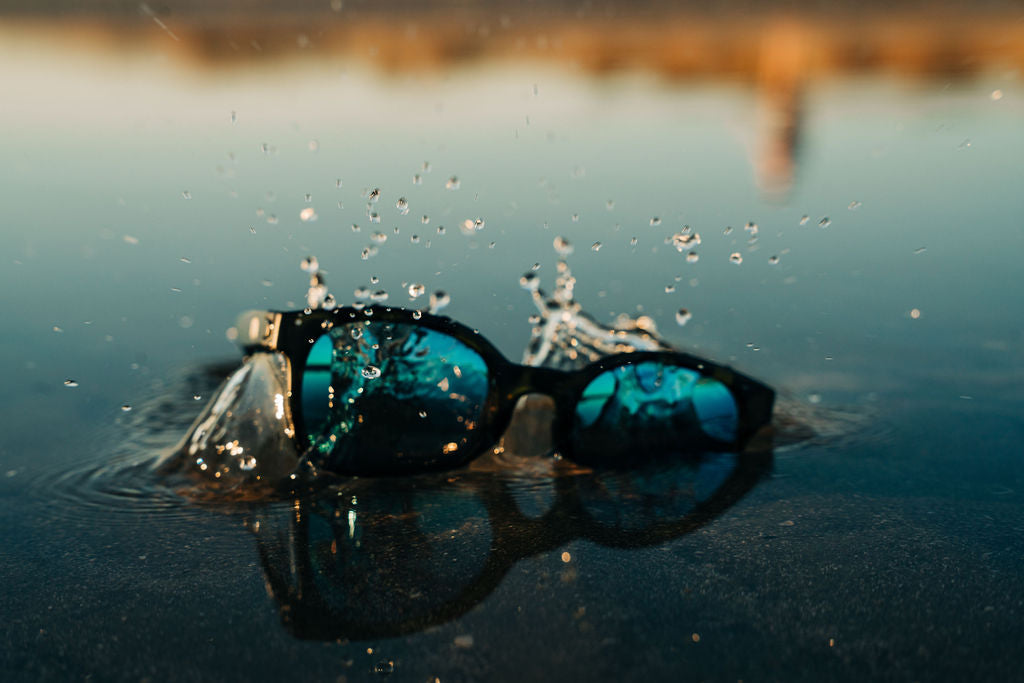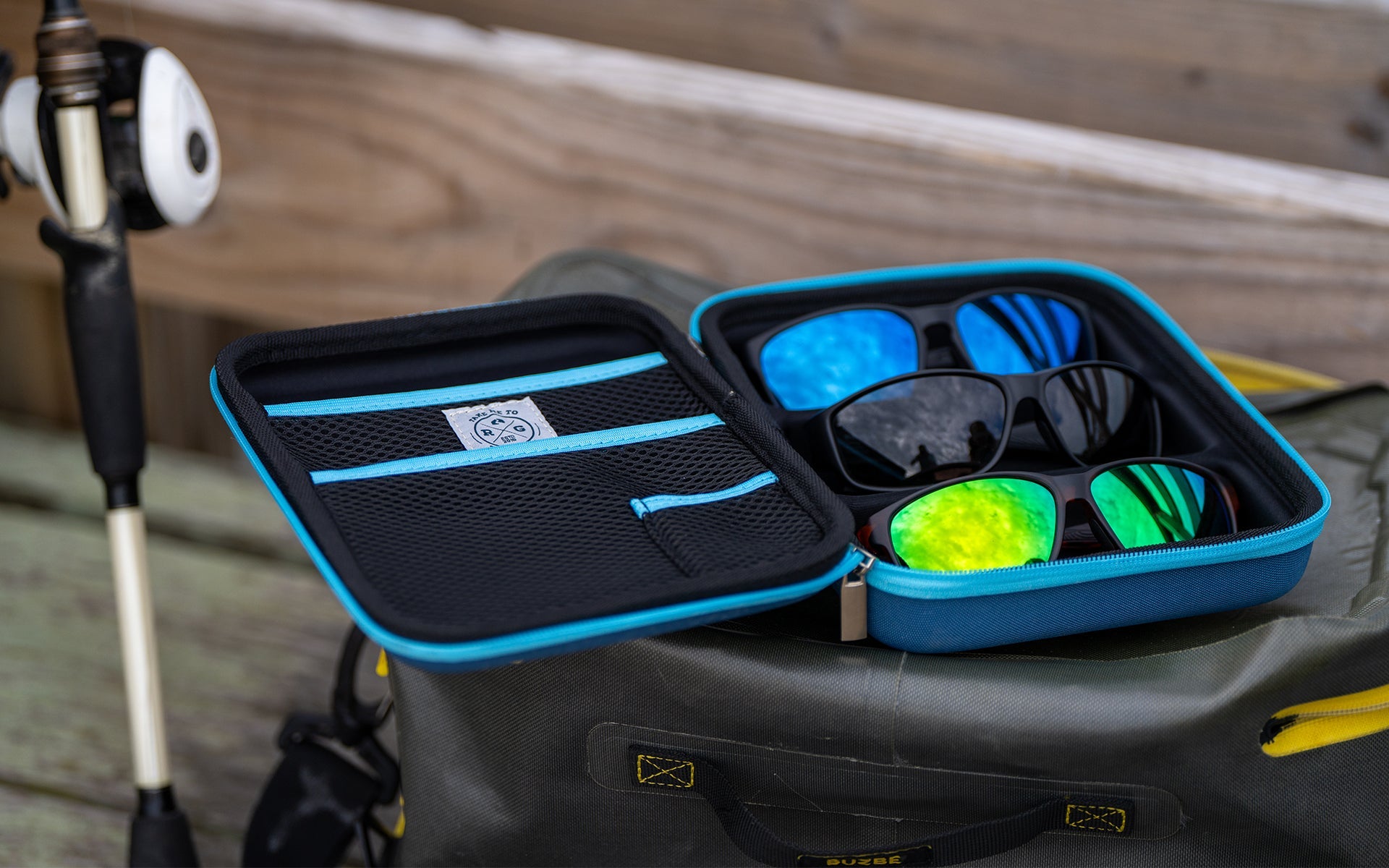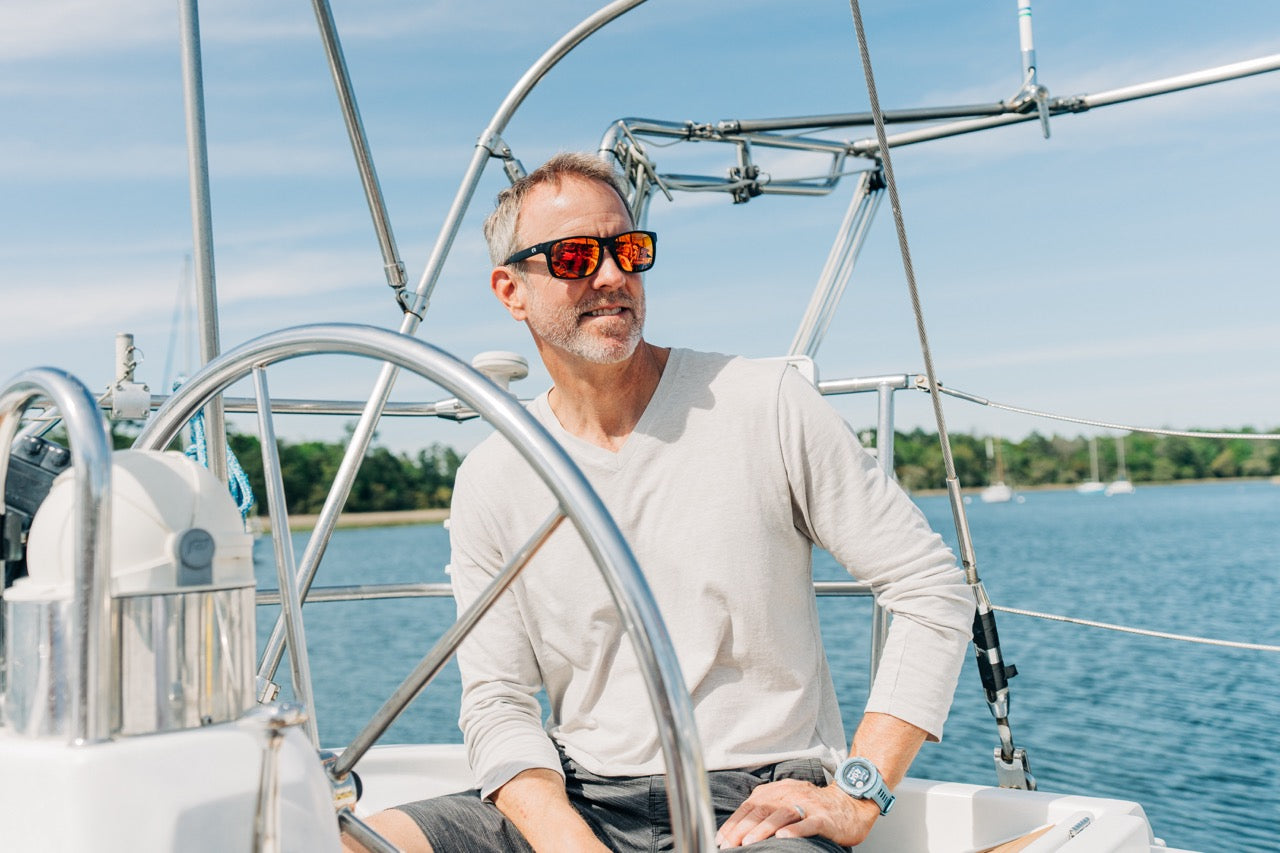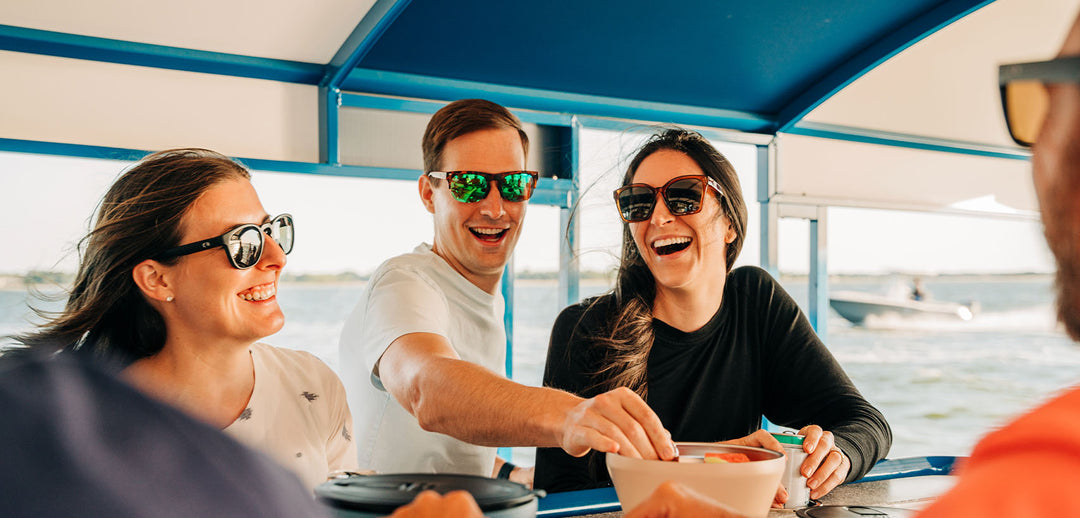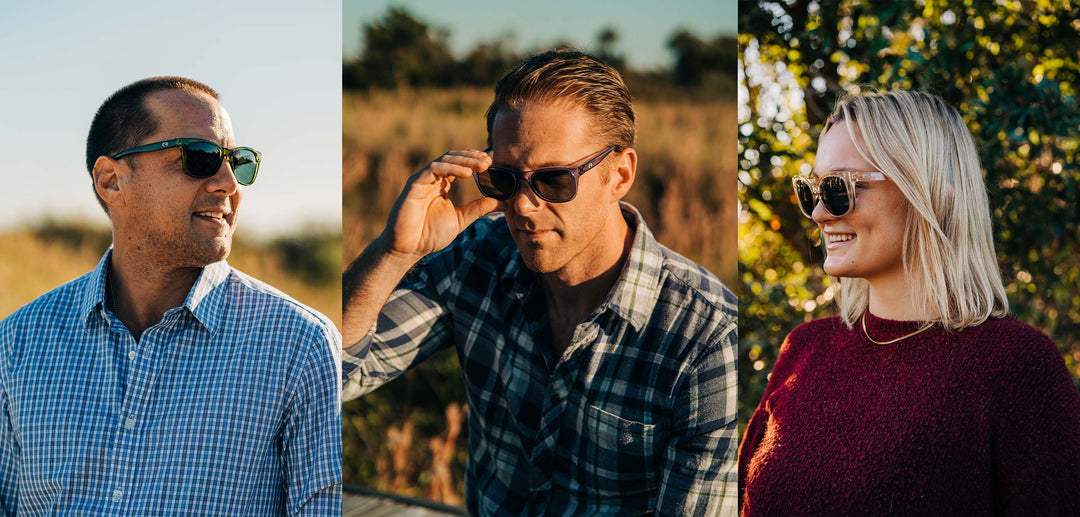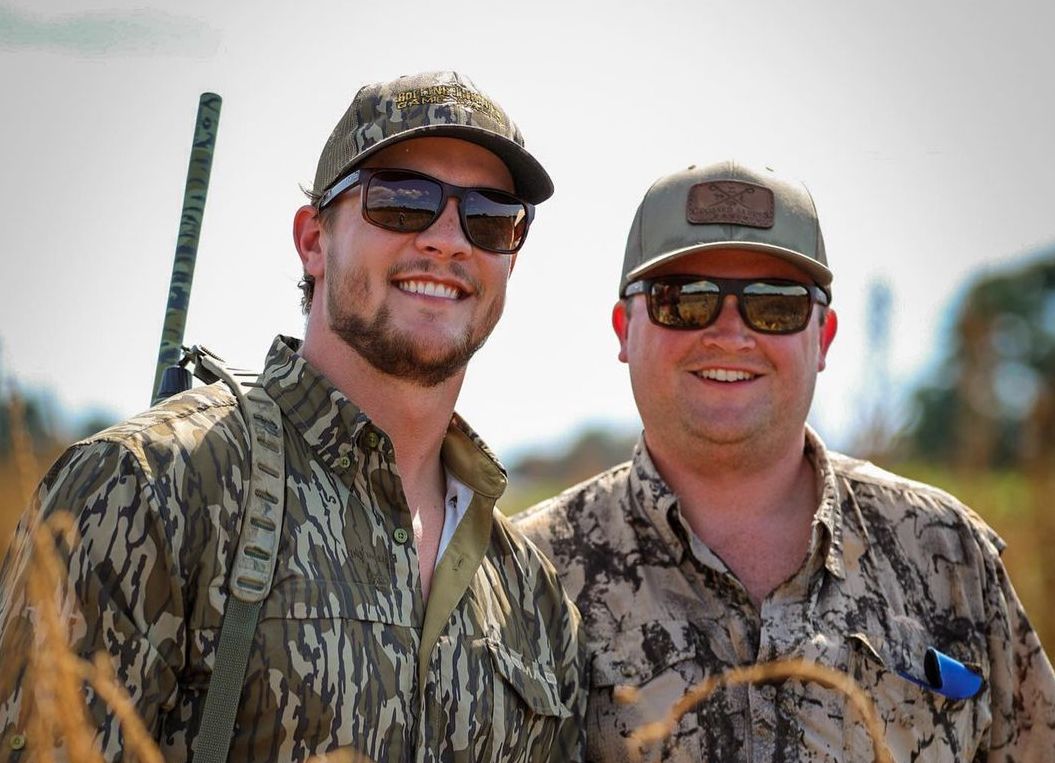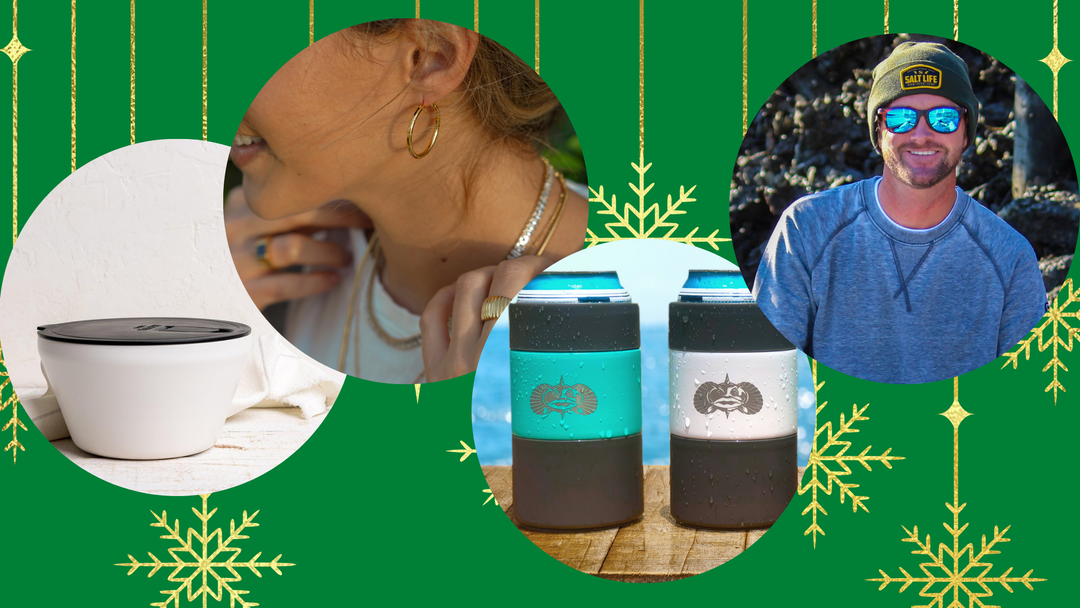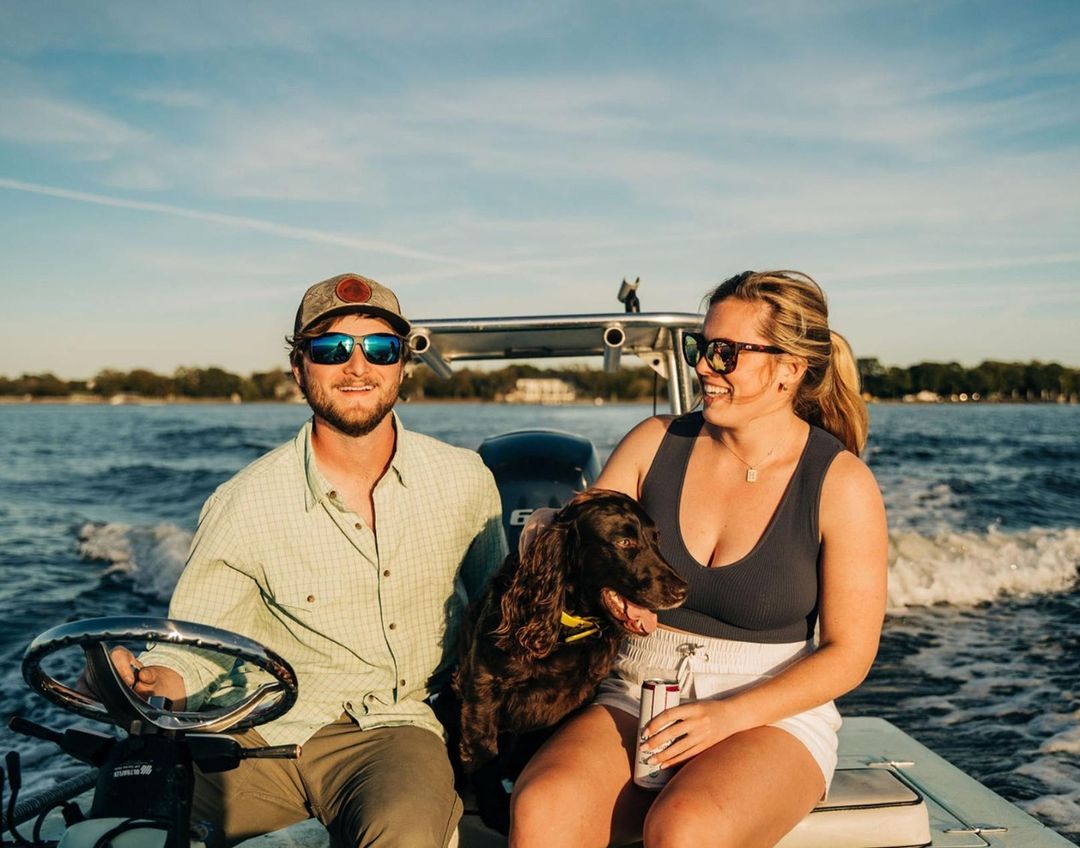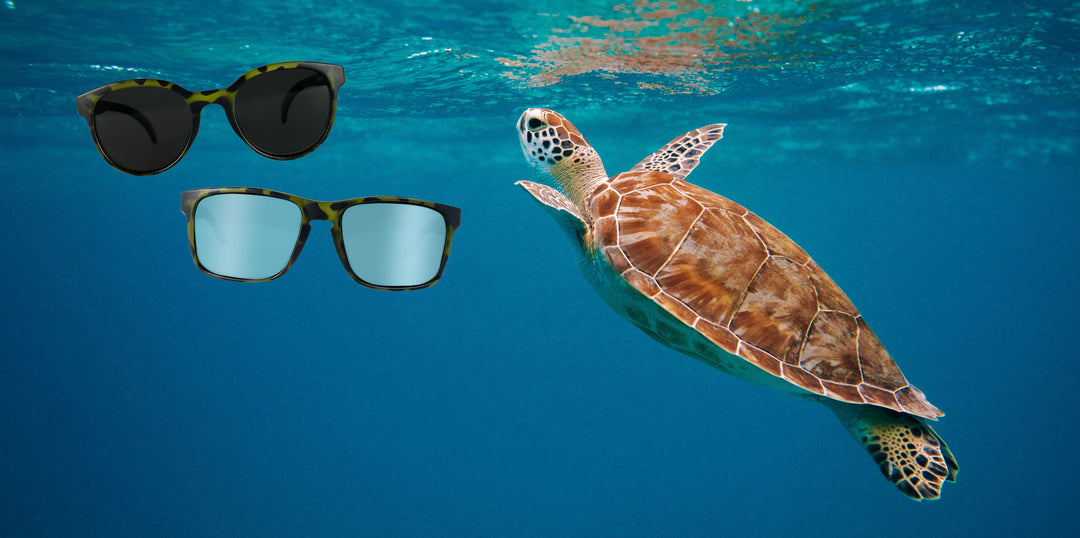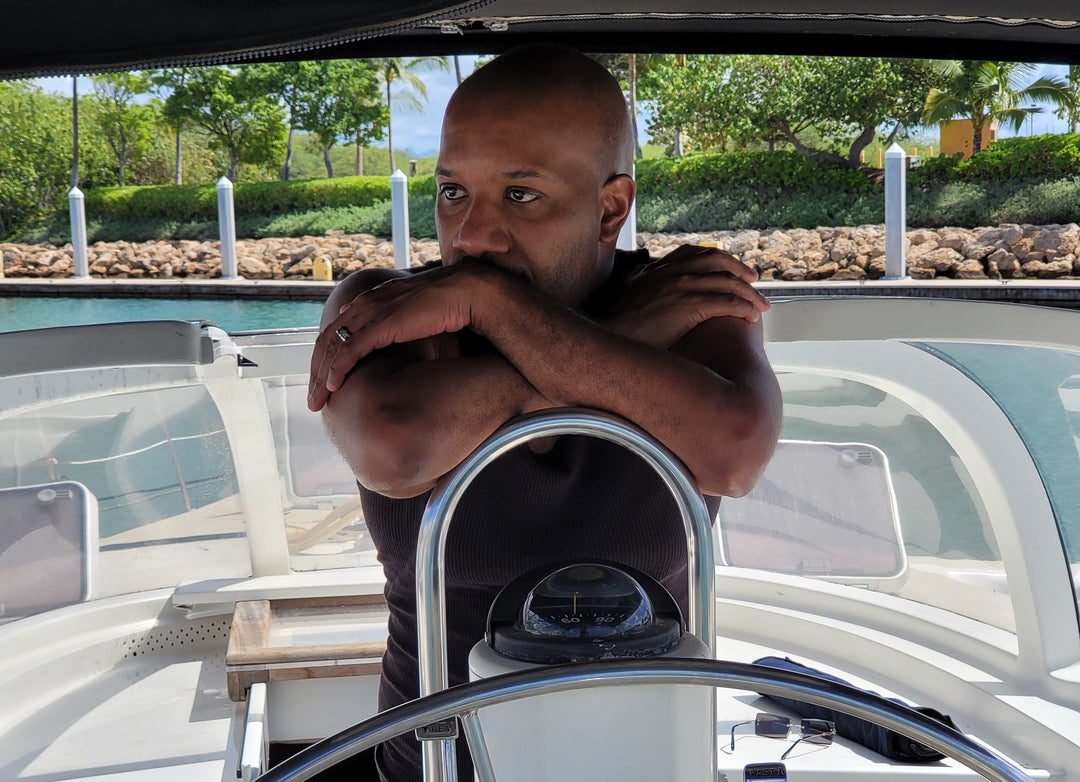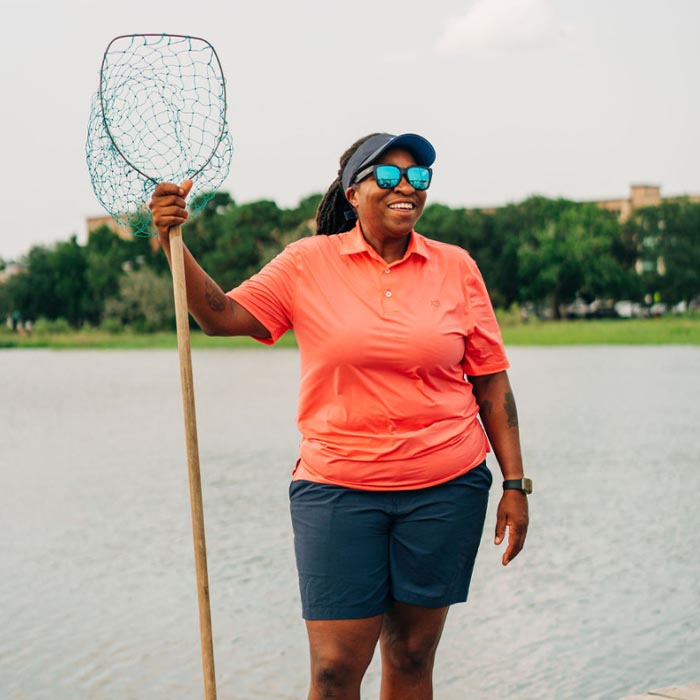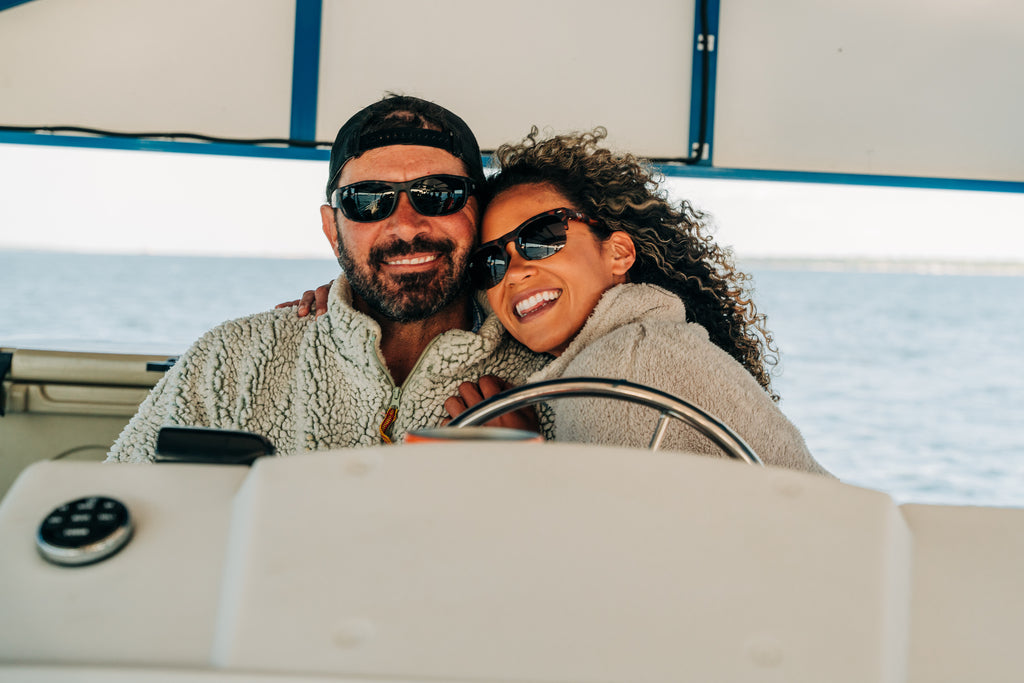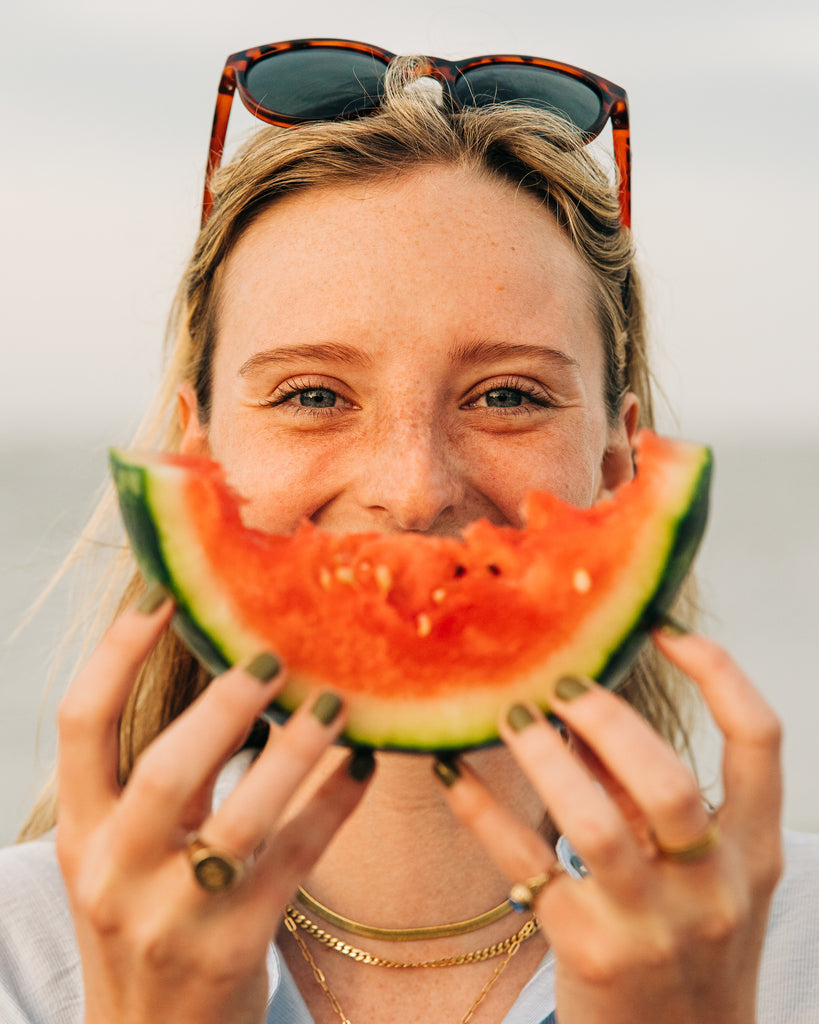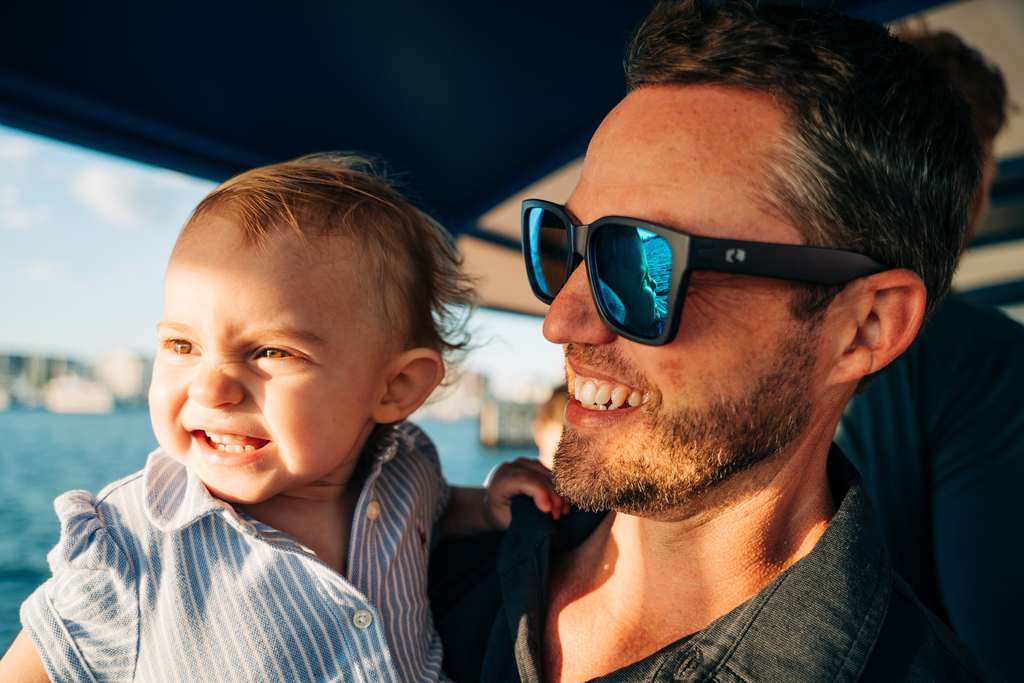Q&A with Sailing Captain Set to Break Records
We're ecstatic to introduce one of our newest members of the Rheos fam and legendary sailor, Captain Donald Lawson! Captain Donald has his eyes set on the prize: becoming the fastest American to sail solo non-stop around the world and at that, the first African-American to complete the trip.
His story has inspired many (including us!) and we had the opportunity to discuss it more with him recently. Keep reading to learn more about his journey to the big leagues in sailing, his personal drive and our partnership.
Q: Tell us a little about yourself and how you got into sailing. How old were you then?
"I knew I was ready to go off on my own and break records."
A: My name is Captain Donald Lawson and I am a sailor.
I am originally from Baltimore, MD - yes that Baltimore, MD. I went to Woodlawn Magnet High School where I studied engineering (and met my high school sweetheart & wife!), then went on to Morgan State University to study Industrial Engineering for a couple years before “transferring” over to Annapolis School of Seamanship to go fully into my sailing career.
I got into sailing as a camper at the Living Classroom Foundation (LCF and see below for more on that story!), but my work with the US Navy and the Naval Academy is how I got to experience a lot of amazing things as I got older.
I went on to teach all over the world including in Africa, Europe, Caribbean, and obviously all over the USA. To pay the bills, I became a delivery Captain and this is where I got most of my sea miles. I began to move boats for owners from port to port all over the world. It was an INCREDIBLE time of my life and I really developed a lot of great relationships and experiences. I was also very fortunate to race around the globe as well. I was able to race on Open 60’s, multihulls, maxis and day sailing race boats. I was very successful at competing on these boats and that is why I kept getting invites to race on the next boat.
We used to call ourselves Nautical Mercenaries as one event we would race together and the next against each other. But it wasn’t until I got to work for, sail with and then race with the top American Solo Sailor at that time, Bruce Schwab, that I got to see where I was skillswise. And to be able to work with him, learn from him and then impress him, I knew I was ready to go off on my own and break records.
Q: What motivated you to want to chase these goals and achieve all these amazing world records?
A: I grew up in a very athletic and competitive family. But I wasn’t as good as my parents or siblings at traditional sports like basketball, football, soccer, lacrosse and track and field. They all were super talented and successful. I however had the passion and drive, but not the skill. I had to watch from the stands as they won championships and dominated. That built in me a drive that has led me to be super competitive and driven.
So, when I had the chance to race and compete on the water, all of that drive and built-up frustration came out and I found success. When I was a child and knew I wanted to sail around the world, I took a map from a National Geographic Magazine and drew the route around the world I would take. At this time, very few people had done such a voyage (1989) and I was unaware of people preparing to do some similar things. But I also noted on the map brown dash marks between cities like NYC to England or Miami to NYC. These are ancient trade routes that are still used today and in recent times, the best sailors in the world compete to break the routes’ records.
Once Bruce told me we could have set a record when we were sailing in the Atlantic, I knew then that was my destiny. So, now my focus is on setting as many world records as possible and setting more solo records than any other person has before.
Q: What do you love about sailing and the sailing community itself?
"Sailing as a whole is beautiful. I always say, 'sailing is a teacher of life.'"
A: The sailing community is very much a family. There are the good, the bad and the not so nice! US Sailing in particular has been a blessing as it has worked so hard to diversify the sport and get more people like myself into sailing. I remember reading years ago in one of their emails that they understood that the sport would die if it didn’t grow its ranks to include others, including women. But you will always have those in the community who like it just fine the way, who are and will continue to be upset about seeing me on the water, or at their yacht club or beating them on the water. That is life.
Sailing as a whole is beautiful. I always say, “sailing is a teacher of life.” If you think about all the things you learn about yourself, people, teamwork, the environment, etc. very few sports offer this level of higher learning. There is a reason many of the best sailors in the world studied engineering and sciences as we are always faced with these things on the water. I love the freedom, the peace of mind, the adventure and the excitement that leads up to a new voyage, race or trip. I love sharing it as well which is why I have taught sailing all over the world for the last 20 years.
Q: Can you tell us a little more about the Living Classroom Foundation and your part within that?
A: Yes! I started at the LCF. They gave me my first taste of the oceans back in 1989. I was about 9 then and I hadn’t driven a car (lol), rode my bike on my own, been on a plane or even left the state of Maryland. But they gave me the wheel of a 70ft sailboat and told me to steer a course. I felt freer and more alive in that moment than at almost any other time since then. Knowing I was in command made me feel the responsibility and control I had never felt but only had seen others have. I think I asked the captain, “How far can you take a boat like this?” His response changed my life! He looked me in the eye and said, “Technically, you can sail this boat around the world.” I looked at him like, ok I know what I want to do. And from that day to now, I have been working towards that one goal.
The LCF is a great organization that helps so many people with education, careers, environmental issues and so much more. Check them out to learn more about their Shipboard Program.
Q: What are some tips/tricks you have for people that have never sailed but would like to?
"I learn every time I sail - and I have been doing it for almost 30 years!"
A: Learn the fundamentals. I learn every time I sail - and I have been doing it for almost 30 years! You would be amazed how often you see people out there on the water and they are making mistakes not because they don’t have experience, but because no one ever told them the proper way to do a certain technique.
Also, always try to sail with sailors with more experience and knowledge that way your time on the water isn’t wasted. When you sail with an “Old Salt!”, they will show you things they learned and because they had less technology in their day, they had to do the same tasks we do today, but in tougher situations.
Q: Where is your favorite place to sail?
A: My favorite place to sail is in the Pacific Ocean! It is so vast and open, and if you just go (like the ancient Polynesians did!), you will end up somewhere. It may take weeks or months, but you will arrive somewhere new!

Q: Do you have a favorite sailing memory?
"One of my rules is: When I leave on a trip, I am always coming home. Doesn’t matter what life or the ocean throws at me."
A: There are so many great sea stories that I tell over a drink, but my favorite two seas stories are:
- TransAtlantic Solo Trip on a Mini 21 Sailboat.
On one trip across the Atlantic Ocean, I got hit by 4 large storms! By the second storm, I had lost my masthead Spinnaker and to make the situation almost impossible, I lost my ability to charge my batteries. I ended up having to do the last 4 days at sea without an autopilot and had to hand steer almost all the way home.
The seas in the gulfstream were easily (no joke!) stadium high - about 40ft high! I got “mugged” twice by these waves and am just grateful the mast didn’t get knocked off thousands of miles from land! When you are by yourself at sea, you don’t have anyone who can help you with problems. Fortunately, my wife and family were able to follow my progress because the tracking device was still working. I didn’t know if it was or not. I did have enough power to call her one last time before the phone and power onboard died. I was so tired during the last 2 days of sailing; I literally hallucinated and thought my friends were onboard. I asked my imaginary friends to steer the boat while I laid down for a few hours. When I woke up and realized it was just me onboard, I thanked the Lord I was in the open ocean and not near land! As I finally approached the Long Island Sound and had to sail around Block Island, I was mentally and physically done. Because of the current, I was stuck sailing upwind in 5kts of breeze, at night, against the current until it turned around. I managed to finish the trip, deliver the boat and get home.
One of my rules is: When I leave on a trip, I am always coming home. Doesn’t matter what life or the ocean throws at me.
- The second story is one when I was delivering a cruising monohull to Cape Canaveral, FL and a tropical depression popped up during the voyage.
For those who don’t know, a tropical depression is just a baby hurricane with around 50 to 60 knots of wind and big seas. When sailing through these systems, positioning compared to the “eye” or center of the system is super important. Your goal (when heading south) is to be on the left side of the system as the winds will be behind you and push you south. Low pressure systems turn counterclockwise in the Northern Hemisphere (clockwise south of the equator). When you are heading south and you are on the right-side of the system, you are getting the wind in your face and also generally big seas which can break your boat and get you seasick. By taking your time and waiting for the right moment, you can get a major assist from the system and head really fast south.
So, the 4 of us start off with a system that we know will build over the next 48hrs but it is supposed to build on the opposite side of the gulfstream and head off to sea. Well, as you can imagine from any great sea story, it didn’t and it crossed the stream (lol) and we started to get more wind than we expected, which meant we needed to slow down. But by slowing down and the system moving way more west than projected (around 600nm more west than forecasted!), we were starting to get a windshift that we didn’t want. The issue with coastal sailing is you are on a coastline and there is land off to the side. We were about 300 nm offshore but there is a shoal off of Cape Hatteras, NC that we didn’t want to get too close to, as it goes out about 95 nms and there are a lot of sea creatures over there to hit (another story for later!) and the storm with shallow water equals more waves for a boat that has a keel 10ft deep! So long story short, we hit a lot of wind off the beam (side of the boat) and big waves from the beam as well. This wasn’t very comfortable for the new crew who hadn’t been offshore before and two got pretty seasick.
So, the delivery Cpt and I double handed for about 36 hours until the system had gone far enough away. We tore the mainsail after a big wave hit the boat and shredded the 2-reef point. So, we sailed to Florida with two reefs and masthead spinnaker to Jacksonville, before getting a backup shipped to us to finish the trip to Cape Canaveral.
Q: What made you want to partner with Rheos?
"Rheos’ love of the water and dedication to water sports makes them the perfect compliment to what we do."
A: When we learned there was an opportunity to partner with Rheos, we were so excited because we will only partner with companies and brands that love and support what we do. I love the oceans (obviously!) and take great pride in being out there as well as protecting them.
I have seen the oceans change where the currents are getting stronger on one side but weaker on another. I have seen black trash bags floating in the middle of the Mediterranean, North Atlantic, Pacific Ocean and Gulf of Mexico. I have seen fast food cups and materials just floating around 2-3k nm offshore. I have hit trash at high speeds. I know of people who hit containers and tree trunks.
Rheos’ love of the water and dedication to water sports makes them the perfect compliment to what we do. If people aren’t out there enjoying the waters, they will tend not care about what is happening. Rheos, much like our team at DLR, want to inspire others to come out here and enjoy what Mother Nature has given us.
We believe with this partnership, we will inspire many others to pursue their dreams, and goals. This has been an amazing partnership already and we are already talking about other ways to help the community and oceans we love!
To learn more about Captain Donald Lawson and his quest to set over 12 World Records in sailing, check out his LinkTree: https://linktr.ee/Captain_Lawson
